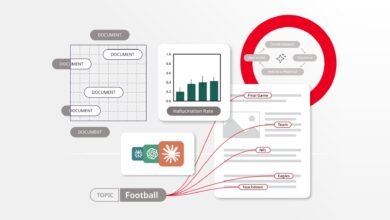AI Glitch Reveals Insights into Google’s Algorithm

▼ Summary
– A glitch in Google’s AI Overviews has revealed how Google’s algorithm interprets search queries and selects responses, often fabricating answers to nonsensical phrases.
– Lily Ray coined the term “AI-Splaining” to describe the phenomenon of AI generating incorrect responses, while Lyndon NA criticized this shift from traditional search functionalities.
– The issue is significant as it involves a Large Language Model (LLM) summarizing answers based on web data, knowledge graphs, and its training, highlighting potential risks.
– Testing showed that Google, ChatGPT, and Claude all made similar mistakes, confidently providing incorrect answers, whereas Anthropic Claude and Google Gemini Pro 2.5 identified invalid queries and guided users correctly.
– The decision tree approach used by Claude and Gemini suggests a more sophisticated method for handling user misunderstandings, contrasting with the hallucinations seen in Google’s AI Overviews and ChatGPT.
A recent glitch in Google’s AI Overviews has inadvertently provided a window into how Google’s algorithm interprets search queries and selects responses. Examining these bugs can shed light on aspects of Google’s algorithms that are typically hidden from view.
Lily Ray highlighted an issue where nonsensical phrases input into Google yield incorrect answers, with AI Overviews fabricating responses. She termed this phenomenon AI-Splaining.
Lyndon NA, known as Darth Autocrat, responded, criticizing the shift from traditional search functionalities to generating fabricated responses. He pointed out that this shift could undermine Google’s role as a search engine, answer engine, and recommendation engine, turning it into a potentially harmful entity.
Unlike previous search bugs, this issue is significant because it involves a Large Language Model (LLM) summarizing answers based on data from the web, knowledge graph, and its own training. Darth Autocrat’s observation underscores the novelty and potential risks associated with this type of search bug.
The issue seems to stem from Google’s system trying to interpret vague user queries. The LLM attempts to predict the user’s intent by considering various possible meanings, similar to a decision tree in machine learning. A recent Google patent, “Real-Time Micro-Profile Generation Using a Dynamic Tree Structure,” suggests a similar approach for AI voice assistants, aiming to guess user intentions and store this information for future interactions.
Testing Google, ChatGPT, and Claude revealed that all three systems make similar mistakes, confidently providing incorrect answers based on inferred meanings. For example, when asked about the non-existent “parallel puppy fishing technique for striped bass,” both Google’s AI Overviews and ChatGPT fabricated detailed but incorrect responses. Google’s AI Overviews described a mix of real fishing tactics, while ChatGPT offered a plausible yet entirely fictional technique.
In contrast, Anthropic Claude correctly identified the query as invalid and provided a list of legitimate fishing techniques. Similarly, Google Gemini Pro 2.5 recognized the incorrect query and used a decision tree to guide the user towards the right answer, reflecting a more sophisticated approach.
The decision tree approach used by Claude and Gemini suggests that these models are better at identifying user misunderstandings and guiding them to the correct information. This method contrasts with the hallucinations seen in Google’s AI Overviews and ChatGPT, indicating a potential gap in the models used for handling text queries.
Google’s recent announcement of Gemini 2.0 for advanced tasks hints at improvements, but the AI Overviews’ hallucinations suggest that the current model may not be as advanced as Gemini 2.5. This discrepancy highlights the ongoing challenges in refining AI’s ability to accurately interpret and respond to complex or nonsensical queries.
Understanding these glitches provides valuable insights into the inner workings of AI systems and underscores the importance of continuous improvement to ensure accurate and reliable search results.
(Source: Search Engine Journal)




